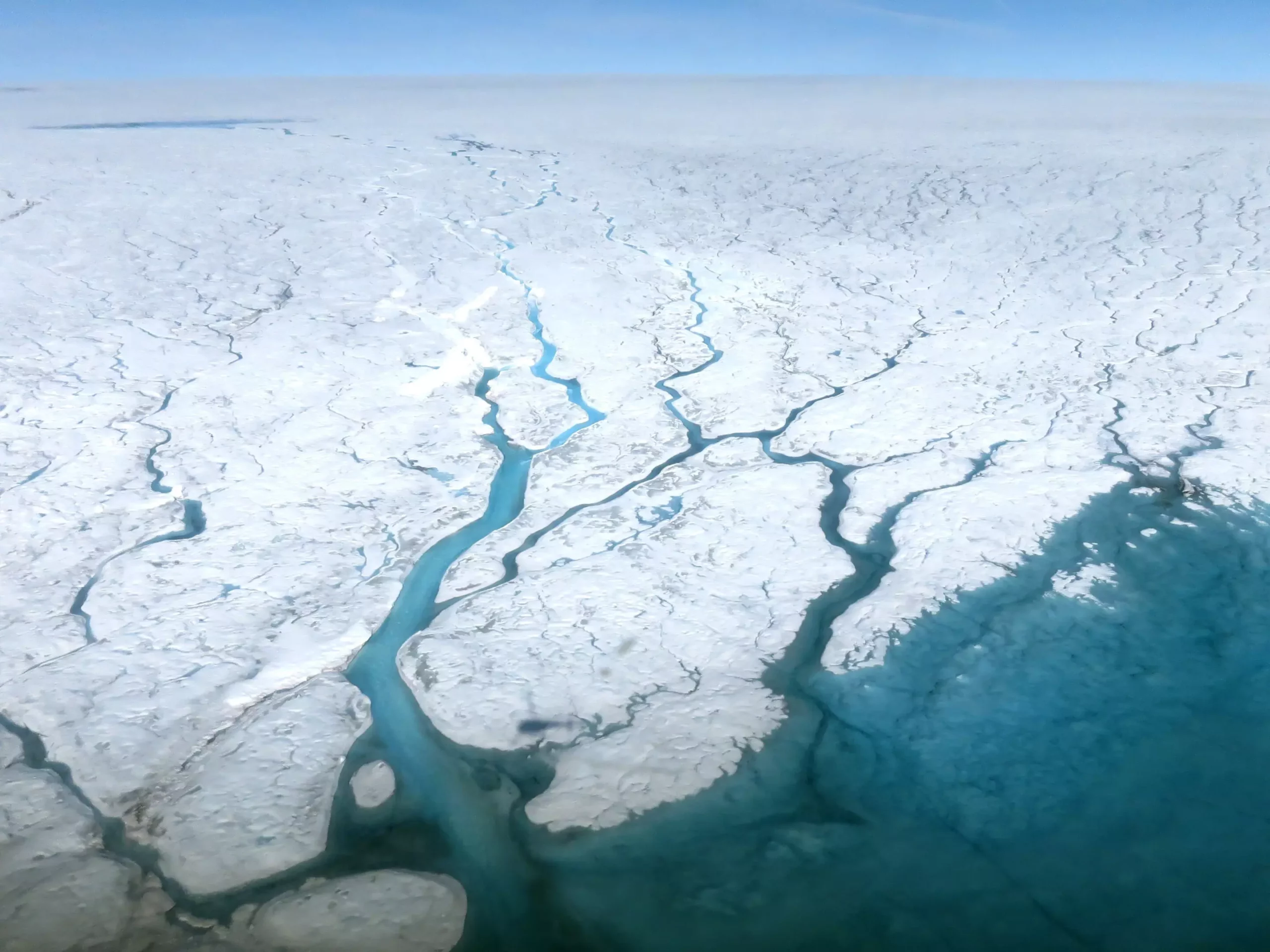The increasing implications of ice sheet meltwater on global sea levels have propelled scientists to delve deeper into the mechanisms underlying this phenomenon. A recent study conducted by researchers from The University of Texas at Austin, in collaboration with NASA’s Jet Propulsion Laboratory and the Geological Survey of Denmark and Greenland, has introduced a new framework for comprehending the flow and freezing dynamics of meltwater within ice sheets. This novel approach may significantly enhance predictions for sea level rise, emphasizing the intricate nature of firn—the transitional stage between snow and solid ice.
Firn, a layered material consisting of compacted snow, is an important player in the hydrological cycle of ice sheets. Unlike solid ice, firn allows water to percolate through its porous structure, providing a crucial buffer for meltwater. When melted snow infiltrates the firn, it can either drain to the underlying layers or be trapped and refrozen. This interplay is pivotal; researchers estimate that firn can reduce meltwater runoff by approximately 50 percent. Yet, the emergence of impermeable layers of ice within the firn can disrupt this balance, redirecting meltwater directly into the oceans.
The investigation led by graduate student Mohammad Afzal Shadab identified a competing process that contributes to the formation of these ice layers. By analyzing meltwater flow dynamics within Greenland, the research posits that as meltwater flows downward, it faces resistance from the cold ice layers that form within the firn. The depth at which this cold ice overcomes the downward flow of warmer meltwater is critical in determining the formation of new impermeable layers.
At the heart of the study’s revelations lies a competition between two contrasting processes: the advection of warmer meltwater and the heat conduction from cold ice. The research team concluded that the formation of ice layers results from the intricate balance between the warmth of the meltwater and the cooling effects of existing ice layers. This findings transforms our understanding of how ice layers develop under varying climatological conditions.
Co-author Surendra Adhikari from JPL highlighted the implications of understanding this delicate interplay. “By grasping the physics behind ice layer formation, we can better predict how the firn can retain meltwater and its subsequent effects on sea level,” he explained. Given that melting dynamics vary significantly with climate conditions, this insight can provide vital data to improve current models used for sea level predictions.
In order to validate the theoretical framework proposed, the researchers compared their findings to empirical data gathered during a 2016 field campaign in Greenland. Teams equipped with radar and thermometers created a detailed profile of the firn layers, measuring the dynamics of meltwater flow. Interestingly, previous hydrological models often diverged from actual observations; however, the new mechanism successfully aligned with on-ground data, establishing a more reliable model for understanding ice sheet behaviors.
The study also uncovered an intriguing correlation between the location of the impermeable ice layers and the thermal conditions during their formation. The researchers found that in scenarios of warming, ice layers formed deeper within the firn, suggesting a chronological record of warmer conditions, whereas colder conditions resulted in layers forming closer to the surface.
Current data reveals that Greenland’s meltwater influx is significantly impacting sea level, surpassing the contributions from Antarctica. With Greenland contributing approximately 270 billion tons of meltwater annually compared to Antarctica’s 140 billion tons, our collective understanding of the implications for future sea levels is critical. Predictions for potential sea level rise due to ice sheet melt remain alarmingly broad, ranging from 5 to 55 centimeters by 2100.
The pivotal role of ice layers, previously underappreciated, has now been brought to the forefront of discussions around climate change. Adhikari encapsulated the essence of the findings: “The complexities of ice dynamics far exceed the simplified models that have long guided our understanding. A deeper comprehension of these processes is essential for accurately forecasting future scenarios.”
The newly developed understanding of the interactions between meltwater dynamics and ice layer formation presents a profound advancement in climate science. As the global community grapples with the realities of rising sea levels, this research will undoubtedly serve as a cornerstone for more accurate predictive models aimed at safeguarding coastal regions worldwide.


Leave a Reply